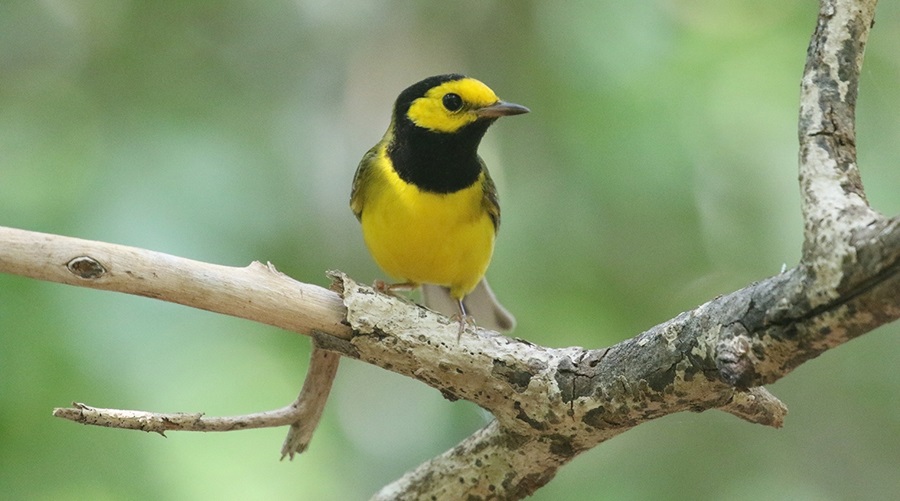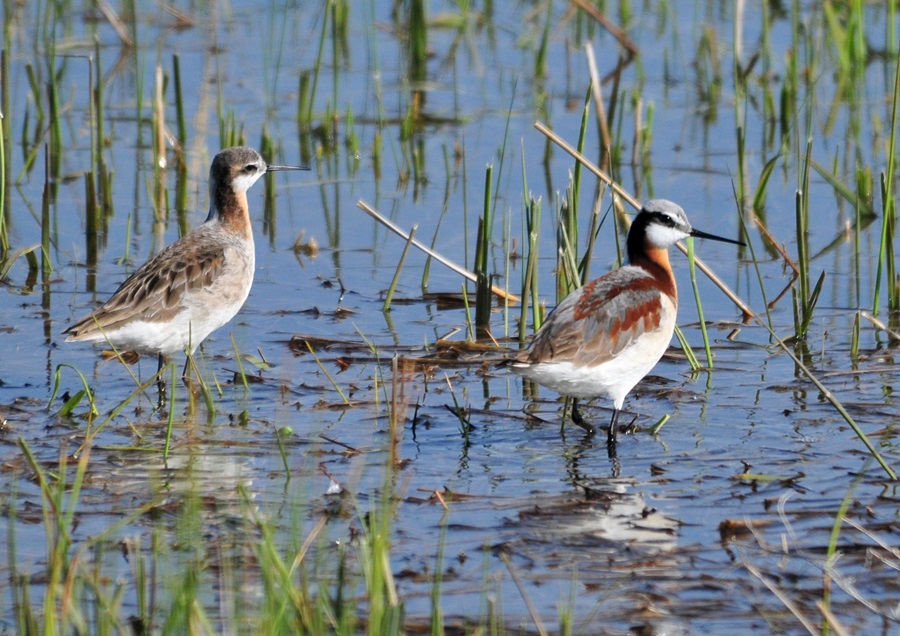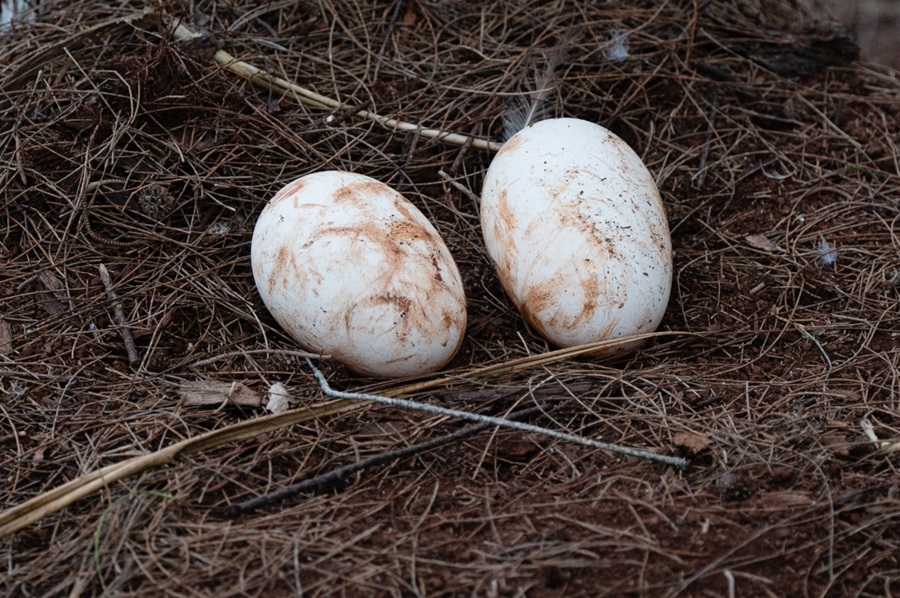Though winter’s grip has not loosened on the Outer Cape, the birds are already signaling the changing season. Chickadees, song sparrows, and house finches are beginning to sing more frequently, red-winged blackbirds and grackles are forming big flocks in the marshes, and ravens are courting and may begin laying eggs soon.
For birds, spring means finding a mate — thus we are in the midst of a flurry of activity some observers might call romantic.
Often this means showy, dramatic males trying to impress drab females. A male warbler’s bright plumage and a male sparrow’s song both evolved to impress females. Some birds have full body modifications to attract partners: barn swallow females are drawn to the males’ long tails, and the wing feathers of an American woodcock are thin, the better to make a twittering sound during the males’ impressive display flights.

But mating and courtship in the bird world is not all a male-wooing-female thing. Bird romance, so to speak, regularly bends the relationship and gender norms that we may assume are invariable.
For one, males don’t always do the wooing. In a group of shorebirds known as phalaropes, the females are the ones whose plumage features swaths of bright red, orange, or blue feathers, while male plumage is dull by comparison. The females pursue the males, spar over them, and defend them from other females. And once a pair lays its eggs, the female leaves all incubating and chick-rearing duties to the male while she goes off to find another male to mate with.
Polygamy is rather common in birds. Although ornithologist David Lack estimated in the 1990s that more than 90 percent of bird species are monogamous, more recent research using genetic testing has allowed scientists to identify the parents of nestlings. The results have revealed that males and females alike regularly mate outside their “monogamous” pairings in many species.
Cape Cod’s native saltmarsh sparrows are among the most extreme practitioners of avian polygamy. Nearly every female’s nest contains offspring from more than one male. The males essentially do not compete for females. They hold no territory and do not fight each other, and their so-called whisper song is so weak that it barely seems to serve a function. Indeed, much of the competition among males likely takes place inside the females as the sperm of different male sparrows race to fertilize the eggs.

Some birds are loyal and monogamous. Albatrosses are perhaps most famous for this. There are accounts of Laysan albatross pairs in Hawaii that have mated every year for decades. Research has shown that in up to a third of these couples, both partners are females. In these pairs, one of the females will mate with a random male but then raise the resulting egg with her female partner.
Albatrosses are not particularly exceptional in this regard, as same-sex bird couples are remarkably common. In his 1999 book Biological Exuberance, Canadian biologist Bruce Bagemihl identified 153 bird species that have been recorded exhibiting same-sex mating, and more have been recorded since. Canada geese, eastern bluebirds, tree swallows, wood ducks — the list of queer birds goes on and on.
Birds have also been known to mate outside their species. In a 1959 article in The Auk, Oklahoma State University zoologist Daude N. Griffin described in graphic detail his observation of a male house sparrow and a male brown-headed cowbird mating on a fence. The male sparrow flew on top of the cowbird, grabbed its head feathers with its bill, and mounted it over and over for about five minutes until the pair flew off with the rest of the flock.

And in the bird world, like the human world, transgender birds can find love, too.
In a 1993 issue of the Wilson Bulletin, Daniel K. Niven, a University of Illinois researcher working at the Smithsonian Biological Research Center in Maryland, reported his observations, beginning in 1988, of a male hooded warbler, a black-and-yellow southeastern bird that turns up occasionally on Cape Cod, behaving like a female.
Niven and his colleagues named this bird Y and watched it build a nest on its own, sit on it, and ignore a loudly singing male nearby. That male, which the researchers named X, did not treat Y as a threat, despite Y being in its territory.
Y’s nest was empty at first, but eventually a female hooded warbler laid eggs in it. (Hooded warbler females will sometimes offload parental responsibilities by laying their eggs in other birds’ nests.) Y sat on those eggs, incubating them, while the loud male, X, began bonding with and feeding Y. When the eggs hatched, X fed the chicks, too.
Not that this coupling was monogamous. All the while, X was busy feeding other female warblers and their chicks. The birds’ arrangement was repeated the following breeding season, and again later with another male taking over X’s role.
The case of the hooded warbler named Y is more than just the story of a male bird that acted kind of like a female. Y was a bird with normal testes (the biologists performed a surgery to check that) displaying female behaviors and was treated as a female by the males that cared for it and by females that laid eggs in its nest.
Sure, it’s pretty much impossible to claim that a bird is transgender in the human sense, but in hooded warbler society, Y was female, and its relationships were no less valid than any others in those woods. If hooded warblers can accept reality as it presents itself, surely we can, too.



